If you’ve been treating SEO like it’s still 2021, it’s time for a wake-up call.
The original playbook (target the right keywords, build some links, wait for traffic) isn’t enough now to remain competitive. In 2025, search isn’t just search anymore. It’s AI-powered — and it’s stealing clicks before users ever hit your site.
In just the last year, we’ve seen:
If this doesn’t make you a little nervous, it should.
But here’s the good news: brands who move fast can still win. SEO isn’t dead, it’s just evolving. To stay relevant, you need to rethink how your content shows up, gets discovered, and earns trust in a world where AI has infiltrated the customer experience.
So, let’s break down what’s changing, and what your company can do about it.
Large language models (LLMs) like ChatGPT, Gemini, and Claude aren’t just giving people new ways to find information. They’re also changing how users search.
Instead of typing a word or phrase into a Google search bar, more people are now asking more complex questions to chatbots or getting answers from AI tools built into search and operating systems. On top of that, platforms like TikTok and YouTube are exploding as search engines in their own right — especially for younger users who want fast, visual answers.
But let’s not overstate the case.
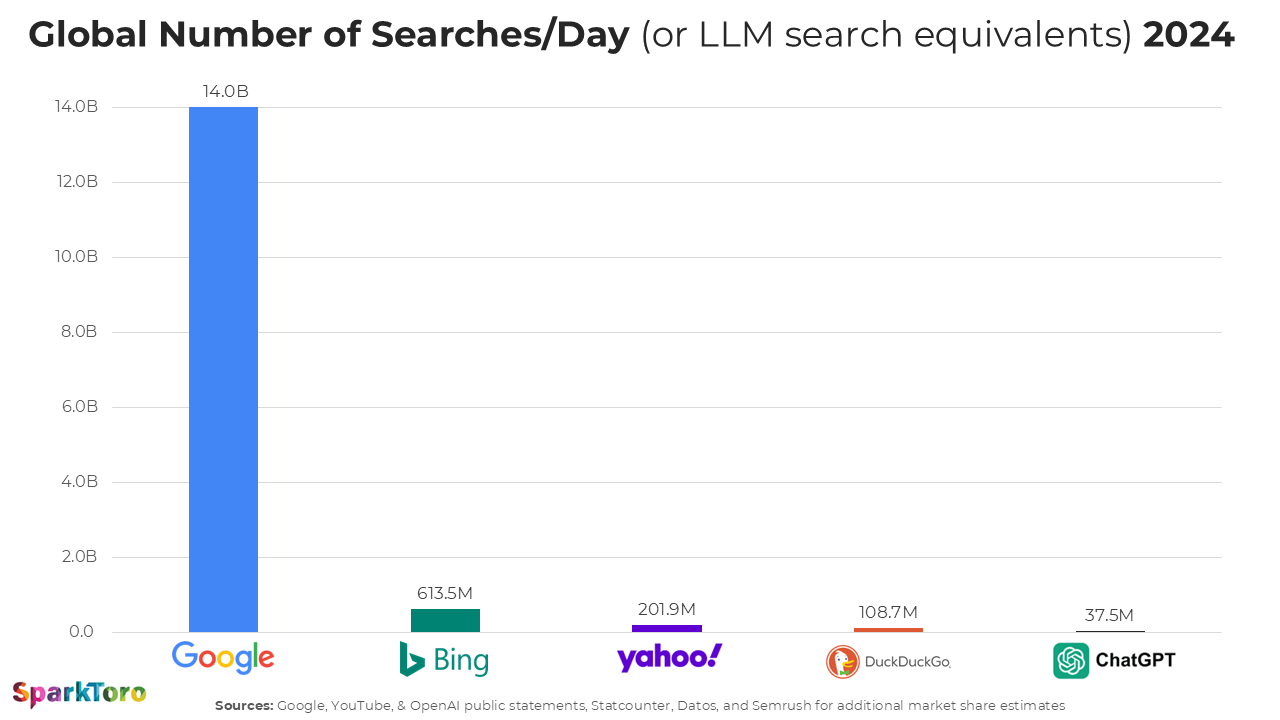
Even as the content discovery landscape is evolving, Google remains the 500-pound gorilla, handling over 14 billion searches a day and 373 times more traffic than ChatGPT (which clocks in at around 37.5 million daily “searches” or queries).
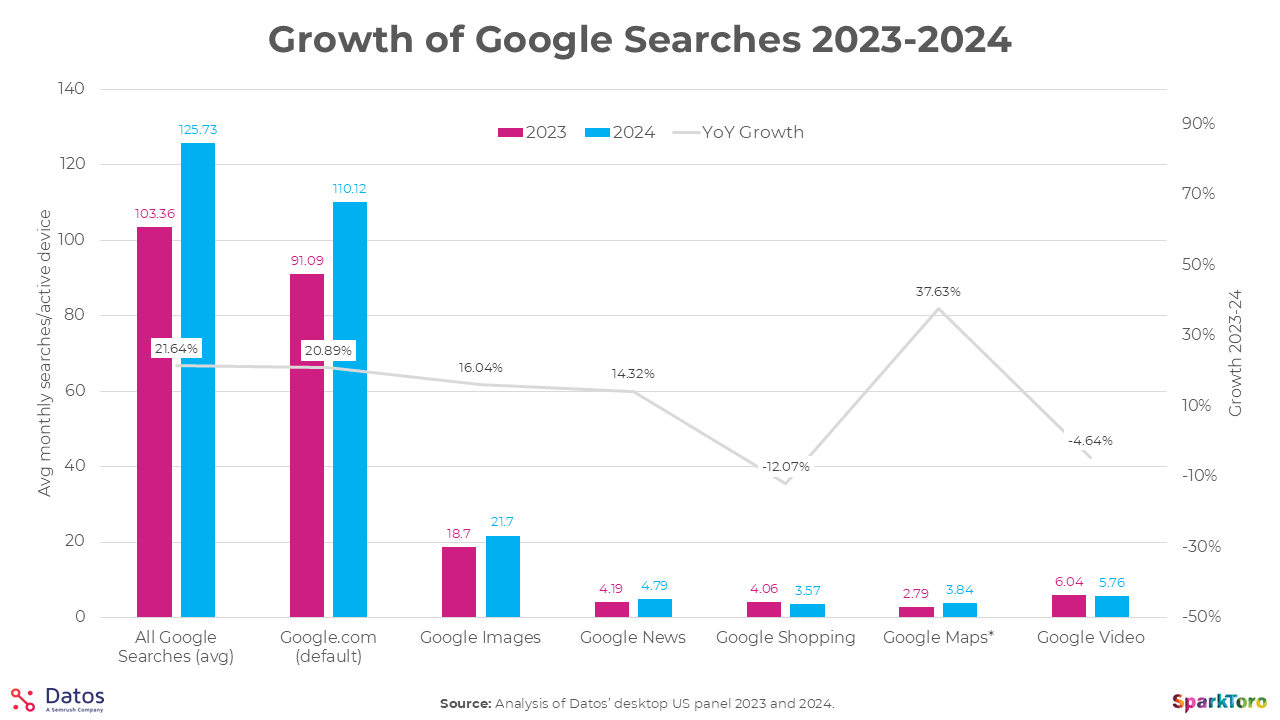
Even with LLMs gaining ground, Google’s search volume is still growing fast — up 21.64% year-over-year across all properties (including Google.com, Maps, and Images). At the same time, CTRs (click-through rates) from search have fallen.
So no, the sky isn’t falling. But the content discovery landscape is undoubtedly changing.
Here’s the real shift: LLMs are shaping the first impression users have of your brand (even if those users never hit your website).
If your content is good, these AI systems will quote you, summarize you, and paraphrase you, but they won’t always link to you. Sometimes they might not even credit you at all. To get discovered in this new world, your SEO strategy needs to expand beyond links and keyword targeting.
You’ll need to start thinking like a PR team. That means:
This is where Generative Engine Optimization (GEO) (also known as AI Optimization (AIO) or Large Language Model Optimization (LLMO)) comes in. But this isn’t some magical new technique. GEO is mostly a rebrand of smart, foundational SEO, with a few additional caveats.
LLMs (much like Google) don’t just reward relevance. They reward authority, reputation, and originality. If your brand doesn’t have a clear presence online, these models will choose to cite your competitor.
The bottom line: You can’t fake your way into visibility anymore. To win, brands will need to do real work, publishing in-depth content with original insights, earning quality links, and building a reputation people (and algorithms) trust.
If you’ve noticed your organic and paid CTRs slipping lately, you’re not alone.
Google’s AI Overviews (those auto-generated summaries now appearing at the top of more and more results) are soaking up clicks before users ever scroll down to your link.
According to Ahrefs, AI Overviews are reducing total clicks by 34.5%. Data from Seer Interactive confirms the same trend: over the past year, organic CTRs on some queries with AI Overviews dropped below 1%, while the same queries without AI Overviews still saw click-through rates over 3%.
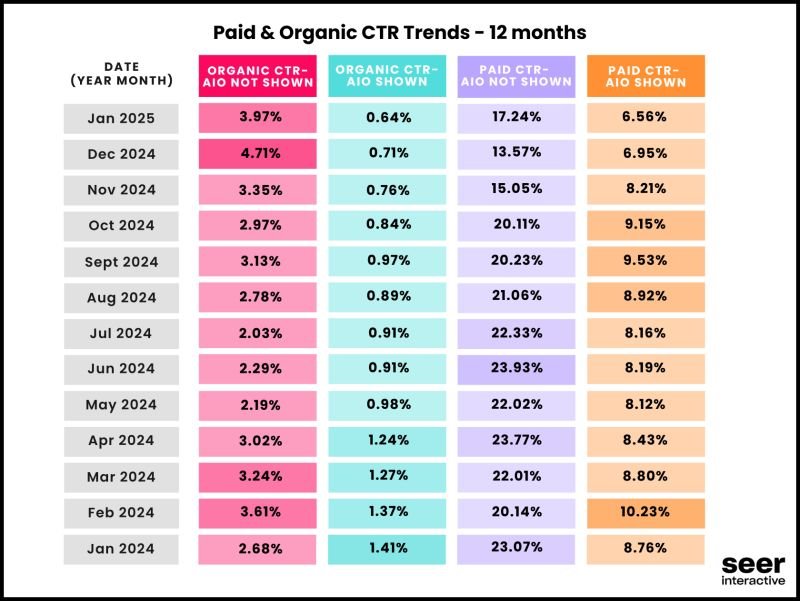
Paid ads aren’t immune, either. Paid CTRs in AI Overview-heavy SERPs are down significantly — often hovering around 6–8%, compared to 15-20% when no AI blurb is shown.
This trend creates a problem on both sides of the equation:
There’s not a magic fix for this.
As AI Overviews claim more space in the SERP, impressions will rise and clicks will fall. That’s simply the new reality of the channel. Paid and organic are both affected, and no amount of tinkering will fully reverse that trend.
But search is still one of the most efficient marketing channels you can use. The move now is to adjust your expectations. Track what you can and focus on quality conversions over volume. When visibility is harder to earn, what you say (and how well you say it) matters more than ever.
So what is Google doing to adapt to this new landscape? Doubling down — especially on commercial queries.
Searches like “white sneakers” and “dri-fit heathered golf polo” now drop users into full-on shopping experiences with product filters for brand, size, style, and color variants, without the need to toggle over to Google Shopping.
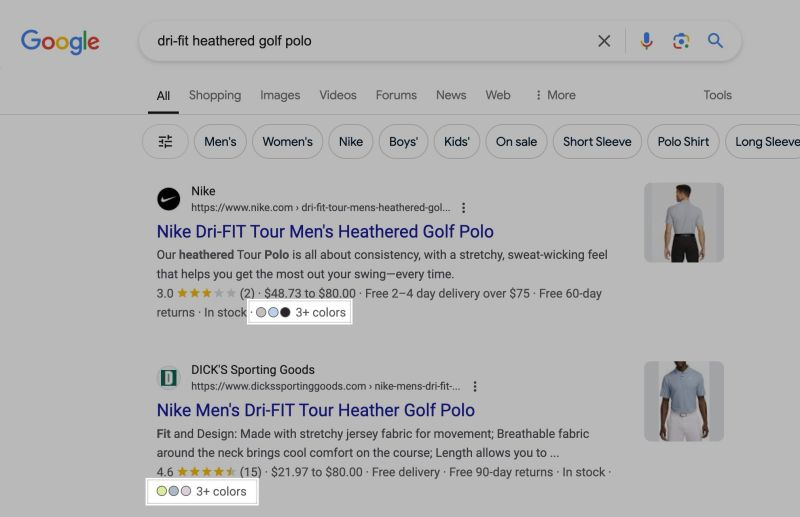
Google is blurring the line between traditional search and direct-to-consumer shopping. It’s not just pulling in product links, but also variants, prices, reviews, and shipping info.
This may even be a precursor to what’s coming next: checkout right from the SERP. In fact, it’s already taking off on social media platforms. This is basically the TikTok Shop playbook — and it works. Why wouldn’t Google follow suit?
Of course, this is all cool from a user perspective. But for brands, it could mean shoppers skip their product pages entirely.
Google’s turning the SERP into a storefront, and that means your Merchant Center listings are now a major player in your SEO strategy.
To stand out in this environment, eCom brands need to:
Most of all, don’t forget to source verified reviews. Those gold stars (and their sources) matter more than ever. Google pulls review data from approved third-party platforms like TrustPilot, Reviews.io, Bazaarvoice, and Yotpo. If you’re not using one of these partners, your competitors probably are (so check them out).
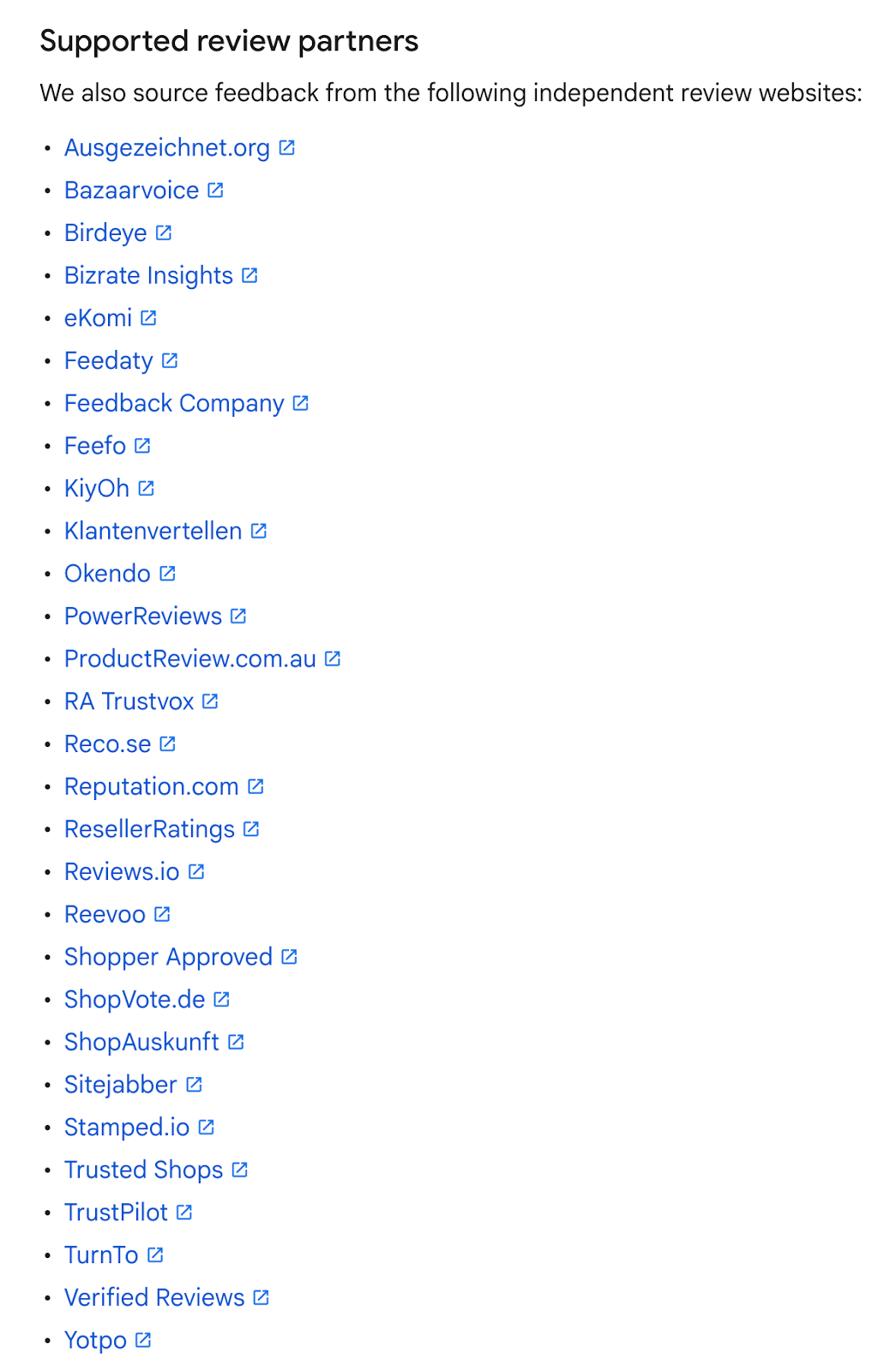
Once upon a time, if you hit “publish,” Google would come crawling. Not anymore.
Thanks to the flood of low-quality, AI-generated content clogging up the internet, Google’s taken a step back from its long-held mission of indexing the entire public internet.
Now, they’re being selective. If your content isn’t adding something new or valuable, there’s a good chance it won’t even make it into their index.
If you want users to discover your content, it needs to send stronger quality signals right out of the gate. That means:
To be clear, Google isn’t out to punish AI-assisted content production. But it is looking for content that feels human and reflects real-world credibility. So, you’ve got two options:
The days of hitting publish and praying are over. From here on out, if your content doesn’t deliver real substance, Google’s just not that into you.
If all of this hasn’t made SEO hard enough, it’s also getting harder to trace where your leads are coming from.
AI tools are taking over the discovery phase, and traditional analytics can’t account for that stage at all. Instead of clicking a link or searching Google directly, users are getting answers (and making decisions) entirely within platforms like ChatGPT, Claude, Gemini, and Perplexity. For brands, that means fewer clicks, fewer sessions, and a whole lot more guesswork around ROI.
At Conversion Media, we’ve already seen this firsthand. One client recently told us a new customer came in as a direct result of a conversation with ChatGPT:

In this case, we know this was powered by content we developed (and broader brand-building efforts across the web). That’s a huge validation for content strategy. But it’s not always like this.
Content marketing efforts may be massively improving a site’s visibility with LLMs. But how do you prove it? You can’t measure a chatbot conversation in Google Analytics. There’s no UTM code, no session duration, no tidy attribution model to point to.
For now, we only have crude measures available to track the performance of content in AI:
This leaves two glaring gaps in data visibility. We have no idea:
To make things worse, AI search tools get the facts wrong — a lot.
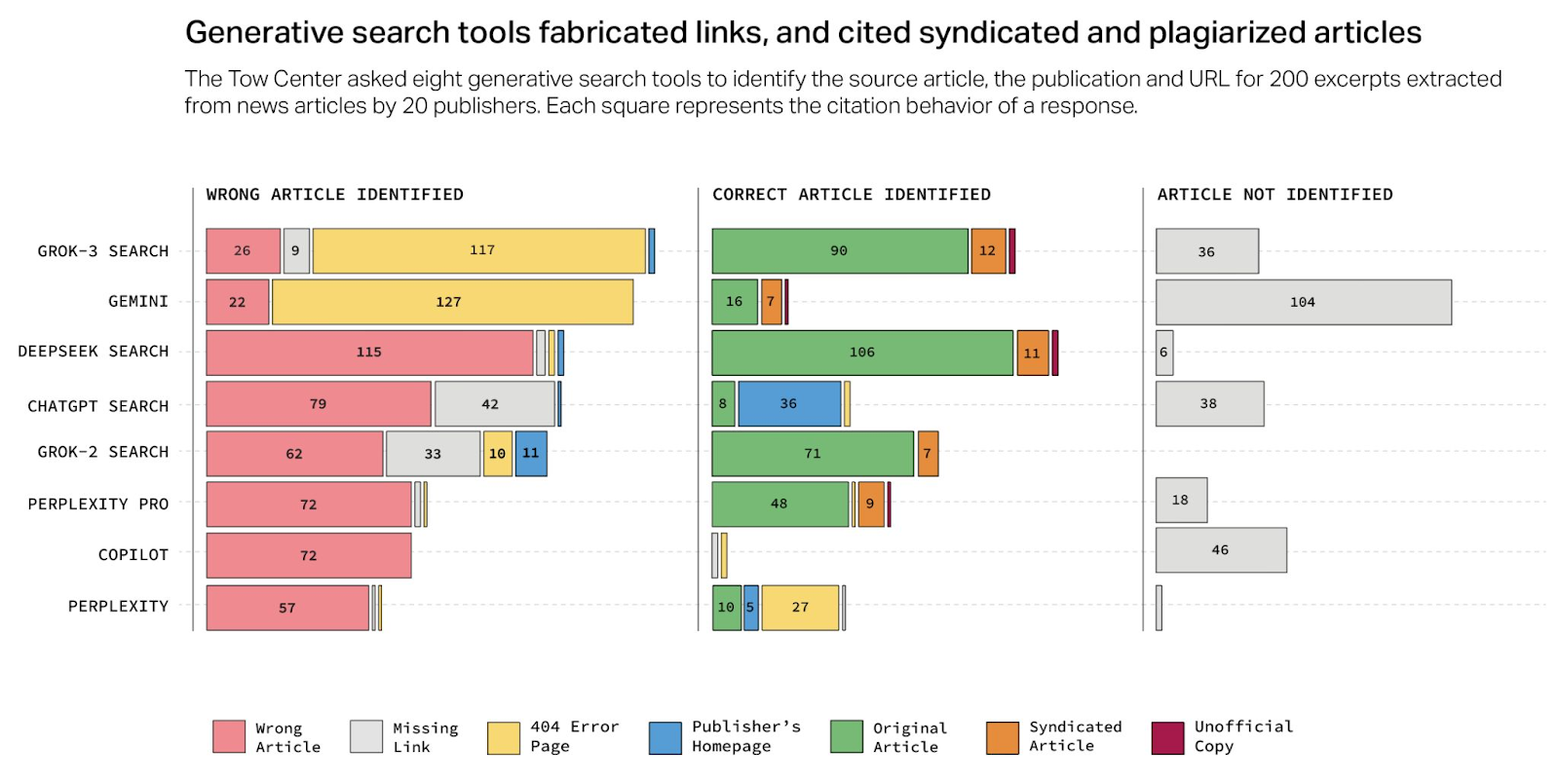
A recent Tow Center study showed that tools like ChatGPT, Gemini, and Perplexity misidentified or fabricated citations in more than half of all tested cases. They pulled from the wrong source, linked to dead pages, or cited syndicated content as if it were original.
Obviously, we expect this error rate to go down as these tools are developed further and achieve mass adoption. Nonetheless, leading AI tools certainly have attribution and factuality issues at the moment.
This new era demands a mindset shift. Instead of tracking every click, focus on brand visibility and influence:
You won’t always be able to draw a straight line from blog post to sale. But if your insights shape the conversation, if your brand is a top-of-mind solution — you’re still winning.
Just because attribution is harder doesn’t mean the impact isn’t there. You just need smarter ways to track it.
If you’re still treating YouTube as a fun place to watch cat videos, rather than a content discovery powerhouse that’s part search engine, part social network — it’s time to rethink.
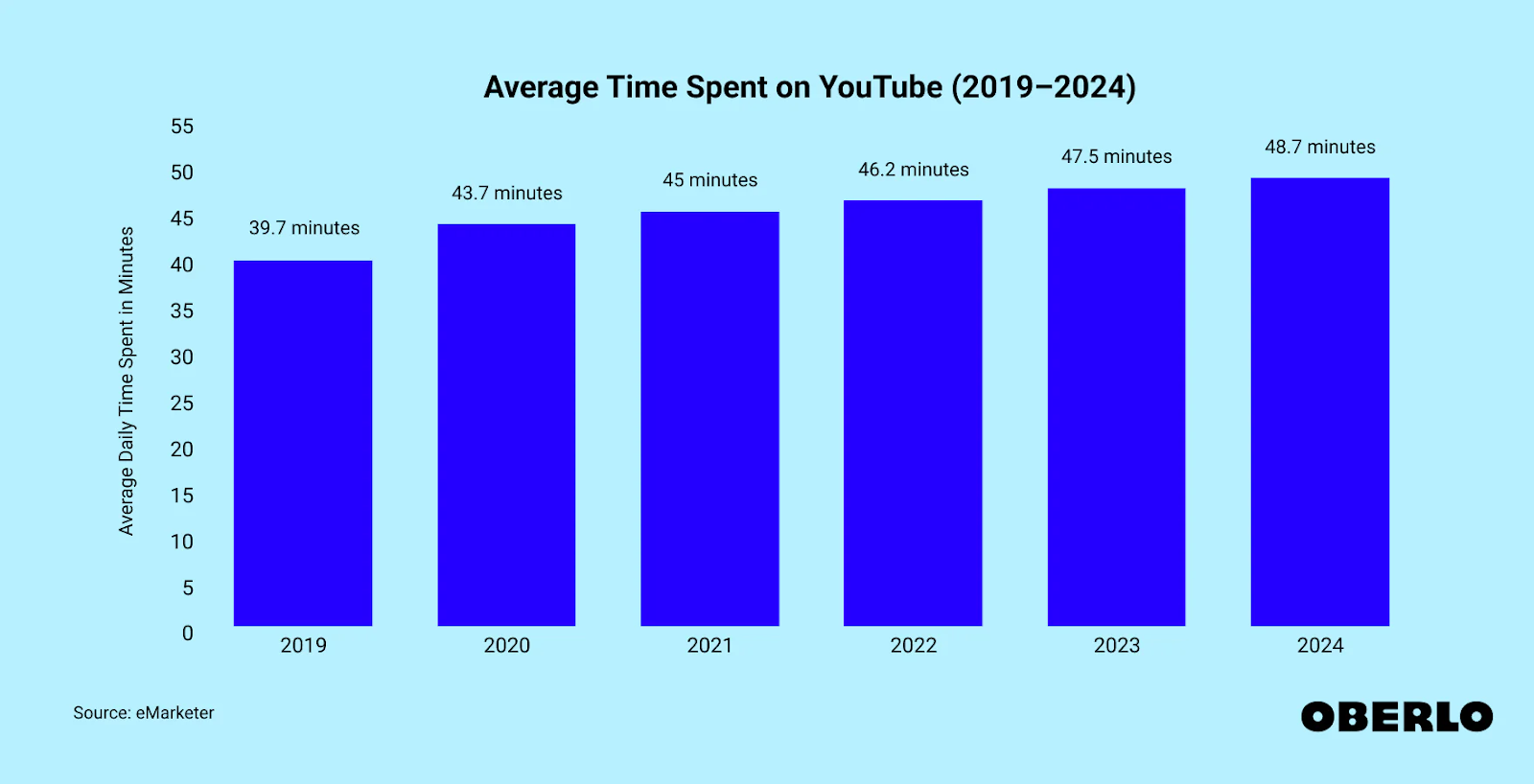
Users now spend nearly 49 minutes a day on YouTube (usage has risen steadily every year since 2019). It’s become a dominant player in how people discover and evaluate products, brands, and solutions.
It’s not just a TikTok alternative. It’s not just entertainment. It’s where people go to learn, compare, and decide. Other numbers back this up:
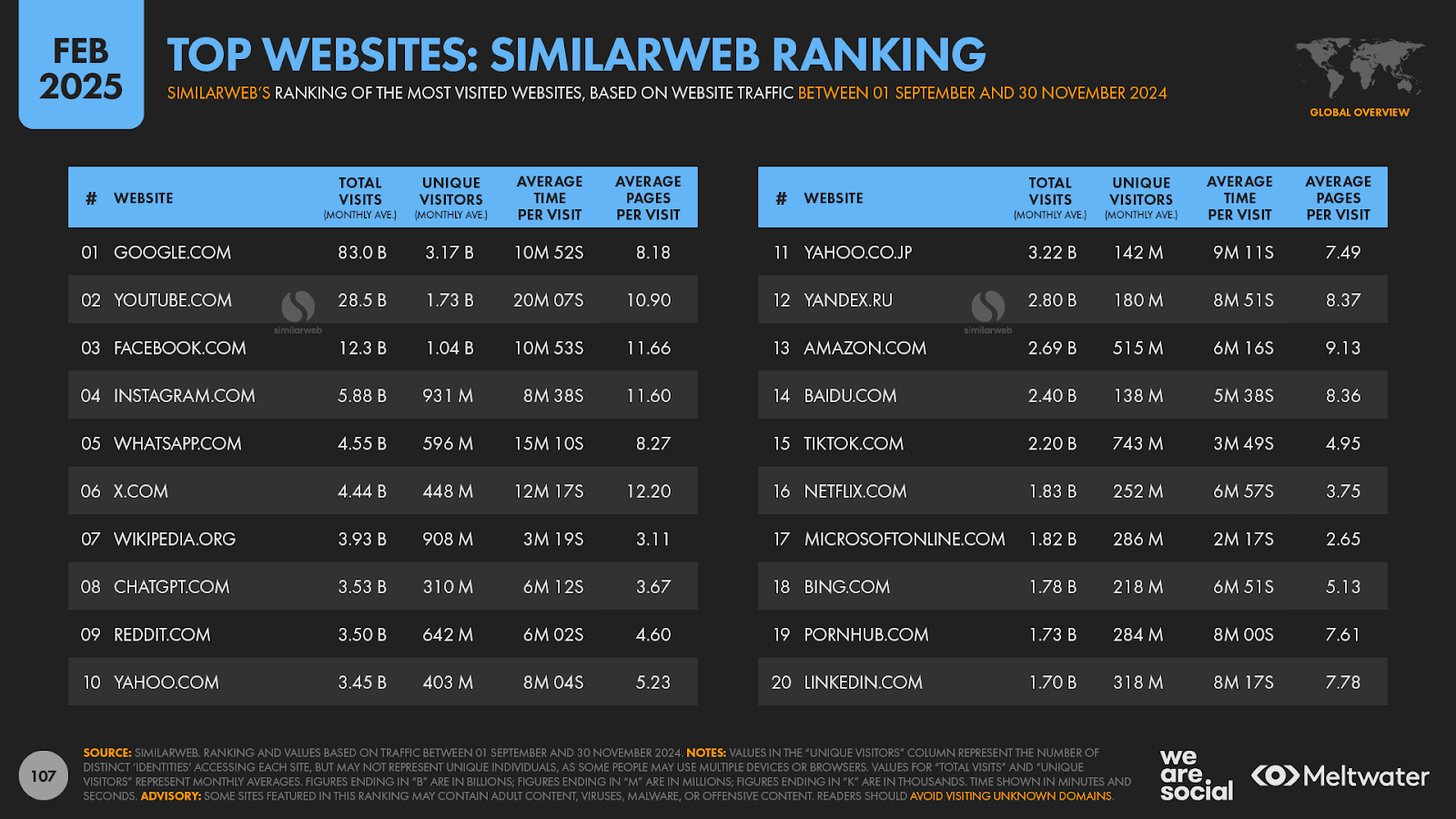
YouTube is now the #2 most-visited website in the world, second only to Google. The average visit lasts over 20 minutes, with users consuming nearly 11 pages per visit. In the U.S., YouTube has officially surpassed Netflix in TV viewership, taking 9.7% of all TV screen time — the largest share ever for a streaming platform.
Video is trust-building gold. It’s distributable across multiple channels. It shows up in Google results pages, ranks in YouTube itself, and is increasingly embedded in AI-generated content summaries.
Unlike AI answers or text snippets, video content offers high fidelity — voice, tone, visuals, and emotion. That makes it sticky in a way blog posts and product pages rarely manage to replicate.
If your brand isn’t on YouTube yet, start now. Treat your videos like any other content asset:
Video is now a trust accelerator and a search discovery channel. As AI platforms start pulling more rich media into their answers, brands with video will have the edge.
Google’s new AI Mode is officially live, and that means the game is changing yet again.
Powered by Gemini, AI Mode combines traditional web results with the LLM’s own knowledge base to synthesize unique answers. While it’s not the default mode yet, it signals a major shift in how search is evolving.
Since rolling out in May 2025, Google’s AI mode already has 100 million active monthly users. Relatively speaking, that usage is still small (only about 2% of Google’s total global user base), but that still includes a huge portion of the U.S. market. Plus, as AI Mode improves, that number will climb.
In any case, the direction is clear: richer answers, faster decisions — but fewer clicks.
Winning with AI mode means thinking beyond traditional SEO. It’s time to make way for Generative Engine Optimization (GEO), which is all about brand recognition, share of voice, and standing out among the content fodder.
Start by tightening your brand positioning. A recent Ahrefs study shows this is a major factor for showing up in AI overviews.
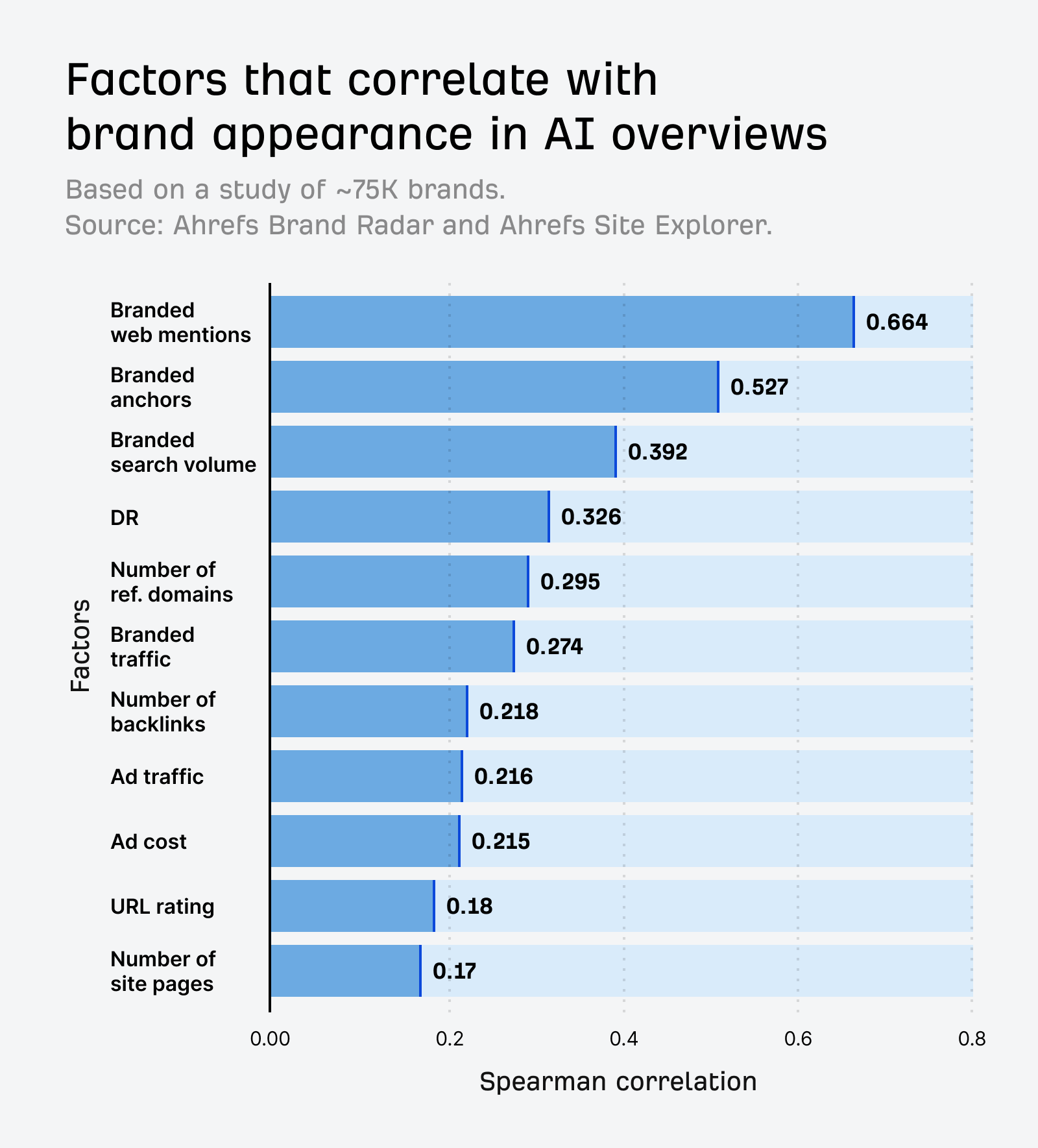
For example, if you sell shoes, don’t just be a “shoe company” with a cool website. Niche down and develop a brand voice to match your market position. Be the brand for budget athletic shoes, or premium hiking footwear, or whatever market segment you want to own. Make sure that distinction shows up consistently in on-site content and off-site brand mentions, so LLMs begin to associate your brand with those characteristics in their web of knowledge.
You also need to incorporate GEO best practices:
Be aware GEO isn’t a quick win. It takes a lot of steady work to shape how AI models perceive (and cite) your brand. But the brands that commit to this now will have a serious head start as AI becomes the default search method.
Here are a few educated guesses about how we think AI will affect SEO in the future. These ideas are all just speculation on our part — but if they all come true, you heard it here first.
We expect to see a rise in visual SERP elements (especially Open Graph images). These already show up in featured snippets and AI overviews, and as Google leans more into generative summaries, having a strong visual preview could become just as important as a good title tag in driving click-through. Don’t sleep on your thumbnails.
We’ve been promised a “voice search revolution” for years, but so far it’s mostly been Alexa setting kitchen timers. But that could change.
The new wave of AI-powered voice assistants (like GPT-4o’s Advanced Voice Mode) can actually hold a conversation: they’re responsive, can be interrupted, and understand nuance in a way older tools never could.
If a tech player with greater distribution, like Google or Apple, rolls out something similar at scale, voice search could finally become useful, and meaningful for content strategy.
Here’s the real dividing line:
The best content in 2025 won’t be “AI-generated.” It’ll be AI-assisted, human-curated, and highly strategic. The bar is higher now, but the tools are better, too.
Search isn’t dead. But it’s evolving faster than most brands can keep up.
While results are harder to track and clicks are down, it’s not hopeless. In fact, for brands that adapt, this is the biggest opportunity we’ve seen in years.
At Conversion Media, we help brands navigate this shifting landscape with SEO, GEO, and content strategies built for the real world:
In this new era of search, the brands that win won’t be just chasing the algorithm. They’ll be earning the attention and trust of real humans.
If your current content plan isn’t keeping up, let’s talk. Book a strategy call with our team and let’s build something smarter.